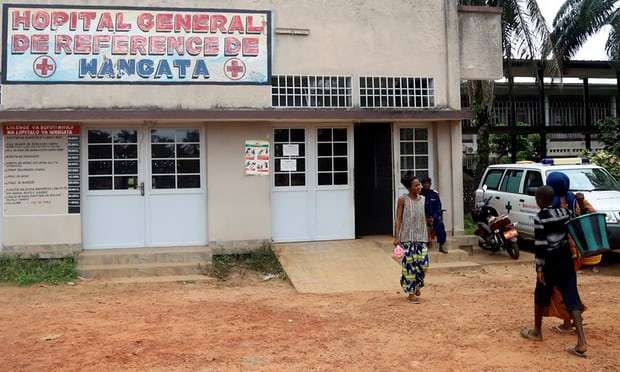The campaign aims to “ringfence” the outbreak. The risk of Ebola spreading within DRC is very high and the disease could move into nine neighbouring countries, the World Health Organization has said.
The death toll has risen to 26, with one new fatality and three new suspected cases declared on Saturday evening. Only one of these was in Mbandaka, raising hopes that the spread of the often lethal and highly contagious disease in the city could be contained. Forty-six people are now known to have been infected.
Oly Ilunga, the country’s minister of health, said the vaccine would initially target “the health staff, the contacts of the sick and the contacts of the contacts,”
The vaccine, developed by Merck, is not licensed but proved effective during limited trials in west Africa, where the biggest recorded outbreak of Ebola killed 11,300 people in Guinea, Liberia and Sierra Leone from 2014 to 2016. More than 4,000 doses are in DRC and more are on the way, according to officials.
The vaccination campaign would be a major challenge even for medical services in developed countries, but the DRC is one of the world’s poorest. Four times the size of France, the country has been since it gained independence from Belgium in 1960. Hospitals, roads and electricity have problems, especially in remote areas. A major challenge will be keeping the vaccines cold.
In Mbandaka, a busy traffic corridor that lies on the Congo River and is an hour’s flight from the capital, Kinshasha, medical staff have been issued with infrared pistol thermometers to check travellers for high temperatures, as well as soap, basins of water and logbooks for recording visitors’ names and addresses.
Schools in Mbandaka are implementing preventive measures by instructing students not to greet each other by shaking hands or kissing. “We pray that this epidemic does not take place here,” said teacher Jean Mopono.
Soap dispensers have been put outside some businesses so people can wash their hands before entering. Meat sales at riverside markets have dropped off, traders say, because of the fear of eating contaminated bushmeat, which can pass Ebola on to humans.
Towns across the province of Equateur have been placed under surveillance, as have centres of population upstream and downstream of the outbreak.
River transport is the primary means of movement in much of DRC. This slows the spread of the disease but also makes it difficult to access remote places where outbreaks occur, experts say.
The WHO has stopped short of declaring the outbreak a global health emergency, saying there should not be restrictions to international travel or trade.
Ebola has been recorded nine times in the DRC since the disease first appeared near the northern Ebola River in the 1970s. It can cause internal and external bleeding. It has twice reached Kinshasa but, on both occasions, has been contained.
There is “strong reason to believe this situation can be brought under control,” said Robert Steffen, who chaired the WHO expert meeting last week. But without a vigorous response, the situation was likely to deteriorate significantly, he said.
Nahid Bhadelia, an expert in highly communicable infectious diseases at the Boston University School of Medicine, with frontline experience of the 2014 outbreak, warned against complacency. She said: “The vaccine is a powerful tool but you still need other tools. You still need to find the contacts. This outbreak has multiple epicentres that are some distance apart and include a big city … Then you need some kind of infrastructure to follow up.”
The Guardian
More about: ebola
















































